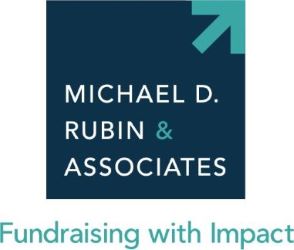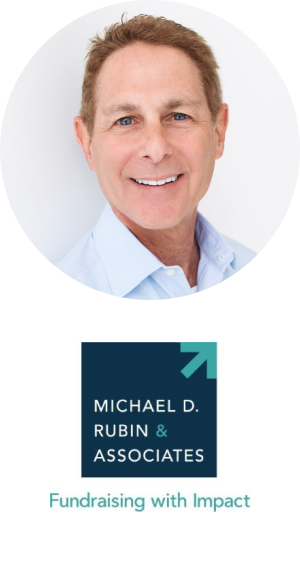Preparing Your Organization for Capital Campaign Success

 By Michael Rubin, Founder and President of Michael D. Rubin & Associates
By Michael Rubin, Founder and President of Michael D. Rubin & Associates
Michael D. Rubin & Associates is a national fundraising consulting firm designed to help non-profits to achieve their strategic goals. Worked with a wide variety of clients to make a meaningful and lasting impact in their communities.
So, you’ve got big ideas, big plans for your nonprofit. The board and staff have worked diligently on a compelling strategic plan. You have a good roadmap for the future. Among the priorities may be some special initiatives vital to the growth and vibrancy of your organization. And vital to fulfilling your mission!
Those longer term strategic priorities are often different than annual operating initiatives - and could take the form of:
- New facilities;
- Renovation of facilities;
- Establishment or growth of endowment (financial stability);
- Special new or expanded programs;
- Technology
These priorities often are included under the umbrella of a Capital Campaign – which describes any organized, intensive fundraising effort that secures extraordinary gifts and pledges for specific purposes (not just for capital purposes), during a unique, specified period.
As you prepare for a possible capital campaign, here are a few key factors to address for success down the road. You’ve already done the hard work by dreaming big through the strategic plan. Now comes the process that makes those dreams into reality!
1. Campaigns Are Not About Raising Money (!)
You read that right. Yes, donors who give toward priorities in a capital campaign will make significant philanthropic commitments. But those resources are simply the “gas in the tank” that helps fulfill your dreams and achieve your missions. And that’s the heart of what campaigns are about. Your benefactors want to be part of making a difference, to serve more, to serve better, to change lives. The more exciting the plans, the more you can align your donors with those plans, the more successful you will be inspiring their philanthropic investment.
Why do you think we call it “philanthropy” – love of humankind?!
2. Campaign Feasibility/Planning Studies – What Are They? Why Do We Do Them?
A campaign feasibility study (also known as a planning study) is a roadmap to campaign success and gives you data to make smart decisions. It involves in-depth conversations with potential lead “investors” in your nonprofit’s vision and plans. The study gives them a chance to provide input and refine those plans. It tests their willingness to get behind and support those plans financially. And it also identifies other lead donors and assesses your nonprofit’s ability to execute a campaign.
You’ll want to get your compelling plans on paper in a preliminary case for support or prospectus - even in draft form - to allow donors to review and react.
Thorough studies often involve 30 or more confidential interviews to get a good feel for what potential donors are thinking. And what donors might give if a campaign were to go forward. Many organizations use outside consultants to go through this process. Others have found success doing a study with only internal resources.
This is about doing your homework, engaging your donors, and LISTENING to their opinions, desires, and dreams. It’s really “the ask before the ask.” It gets your key stakeholders excited about the possibilities and ready to participate when the campaign rolls out.
As consultants, we often hear, “Why bother with a study? It’s a lot of time and expense. Can’t we just go out and raise the money?”
Over 21 years of consulting, we can only think of ONE campaign where the organization did NOT do a study and still reached its campaign goal. The outlier – a school for deaf education celebrating its centennial - knew its donors well and had a strong track record of transformational gifts. And donors had developed a deep trust in its long-time Executive Director and board members.
Virtually every other campaign where we’ve been engaged with no feasibility study has struggled because they skipped this important step.
3. Developing a Compelling Case for Support
You’ve done your feasibility study. You have great data and important input from your donors. You’re ready to put your plan on paper and on your website. You may have heard that “no one ever gives to a great case for support.” They give because they care about your mission and the people who fulfill that mission every day. And because they want to make change in lives!
All that said, donors want to see certain specifics in your plans that will give them confidence that you’ve thought it all the way through.
Things to keep in mind as you develop collateral materials for your campaign:
- Does your plan capture the imagination of donors/investors? Donors clamor for boldness. Is what you’re doing inspiring? Can you tell a story of how you’ve made or will be making an impact?
- It’s not enough to talk about facilities. It’s how the addition or renovation of those facilities relates back to your mission and allows you to do what you do better. And how the programs inside those facilities will make a real difference.
- Is your vision well-documented? Will a donor know that you are experts in your field, that you’ve researched thoroughly, and that your organization is the right one with the right team to bring the plans to life?
- Have you stated your campaign goal and its major components clearly? This is simply demonstrating that you’ve done your homework, you have a budget and can justify asking for this level of support. Make it clear how a gift of $10,000 or $100,000 or $10 million is entirely deserved!
- Tell heartwarming stories and back them up with numbers. No stories without numbers; no numbers without stories. Convey how your efforts have changed or saved the lives of people or groups you’re helping. Have statistics ready for those investors who crave hard evidence of impact and organizational effectiveness. You’ll need to have both. Use video and print to tell your stories of impact.
4. Campaign Leadership
It all starts with the Board. Volunteer leadership is essential for campaign success. It’s the Board’s campaign and they should OWN the effort. This goes directly to one of the Board’s primary responsibilities: being responsible for the financial resources needed to deliver the nonprofit’s mission.
Most successful campaigns start with strong volunteer leadership and formation of a Campaign Cabinet or Committee. How do you recruit these leaders? What should you look for?
- Use feasibility interview data to gauge interest. Key donors often come from the Board and many of those should be part of your feasibility study interviews. Review data from those interviews and LISTEN to what the Board members say about how your plan resonates and if they have an interest in serving in a leadership role.
- Expect a significant percentage of the campaign goal to come from the Board. Many campaigns generate 30% - 60% of giving from the Board or their outreach.
- Develop a Job Description. You wouldn’t consider a paying position without seeing what the expectations were first. Do the same for your volunteer leaders. Key tasks: make a “reaching” personal gift; serve as an ambassador in the community; make connections or open doors to others who could give; endorse policies to help the campaign run effectively; maintain strict confidence relating to donor affairs. Position serving on the Cabinet as a privilege and honor.
- Leading by example is powerful. Board members making a “reaching” gift and asking others to join them is an effective way to inspire donors to give.
- Outline roles of Cabinet members: Not everyone is comfortable with or capable of asking others to give. However, there are several ways to make a difference. Legendary consultant Kay Sprinkel Grace developed a framework of three distinct roles Cabinet members could play: Ambassador, Advocate, or Asker.
- Where to look for Campaign leadership:
- Current and past board
- Long-time steady donors
- Entire donor base: capacity + willingness (use wealth analytics as a guide)
- Outside your community – look for people with natural connections to your project
Campaigns are NOT business as usual. That’s what makes them unusual and special. And that’s why donors are excited and motivated to give more in campaigns over an extended period.
I hope that reviewing these key campaign factors for campaign success will inspire you to take this journey. Masterminding a capital campaign is one of the most exciting and energizing initiatives a fundraising professional can experience. But don’t go it alone – securing philanthropy is a team sport!
For more information about conducting successful campaigns, contact Michael Rubin at [email protected], or (314) 920-5996
About Author

Michael Rubin
Michael D. Rubin & Associates, Founder & PresidentWith nearly 40 years of experience as a nonprofit fundraising professional, Michael Rubin, MBA, CFRE brings a wealth of capabilities, perspective and insight to every consulting engagement. Under Michael’s leadership, Michael D. Rubin and Associates has been engaged by nonprofit organizations with a variety of missions, including: higher education, the arts, independent elementary and secondary schools, health care, public radio, animal welfare, religious, and communal service. Michael’s leadership style inspires a “hands-on” approach within the organization—coupling measurable outcomes with a creative flair.
Michael frequently works alongside board members or staff during face-to-face visits or solicitations for leadership gifts. As a volunteer leader on two boards, Michael understands how important it is to give back as well as to experience first-hand issues facing nonprofit board members.
Prior to founding Michael D. Rubin & Associates, Michael was Director of Development at the Lincoln Park Zoo in Chicago, where he planned and helped execute a $50 million capital campaign. He was also responsible for a broad range of fundraising functions at Rush University Medical Center and Advocate Lutheran General Hospital in Chicago.
He is a Certified Fund Raising Executive (CFRE), a member of the Association of Fundraising Professionals, and earned designation as an associate in the Society of Actuaries. Michael earned his B.A. from the University of Michigan, and his M.B.A. from the Kellogg Graduate School of Management at Northwestern University.